Breaking stone – in a good way!

Mostly when I go to the quarry for a block of stone, there isn’t a piece just the size I’m looking for. This means either I compromise and make smaller than originally intended, or I get a larger block and trim off when I get back to the workshop.
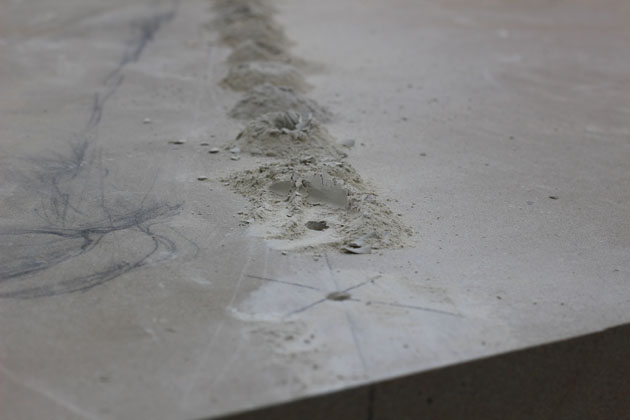
My aim is usually to find a stone which is more or less right so that not too much hard labour is required in roughing out my sculpture, and so that waste is kept to a minimum. In other words the shape of the carving fits as close to the outside edge of the stone as possible.
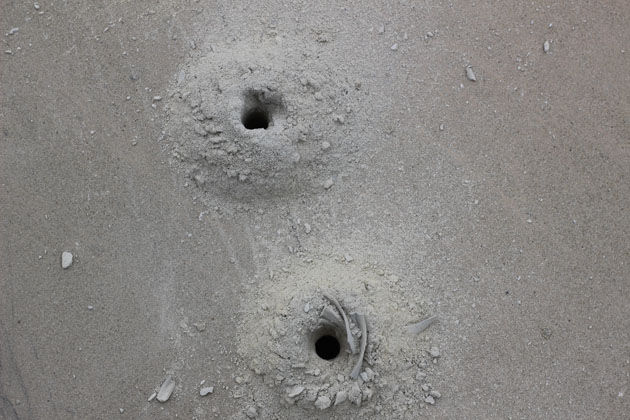
Where the stone is huge, this one is in excess of two tonnes for a large sculpture, occasionally it is worth splitting the stone, to end up with two usable pieces, rather than taking away the excess by chiseling. Though much quicker this way, and economically advantageous, there are risks (what happens if the stone splits in the wrong way!) and you can end up with a pile of useless rubble!
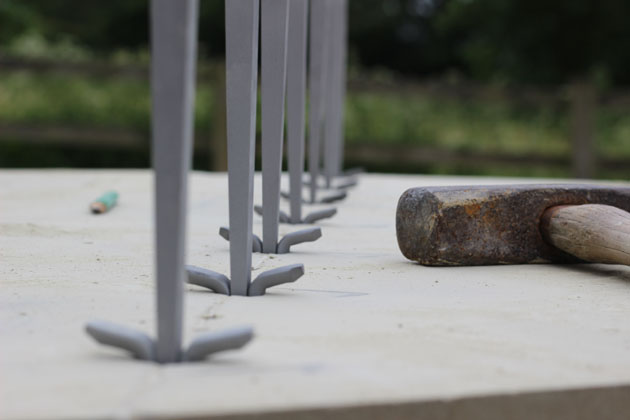
Of course the simplest would be to cut the stone to size on a saw, but a large saw is beyond the scope of my small workshop – sawing stone these days is quick, efficient, highly automated and sophisticated, with vast diamond saw blades and wires available for the quarry owner or large commercial stone yard – so I use the old, by hand method of ‘plugs and feathers’. These are basically wedges which are driven into the stone to split it. At one time all stone blocks were extracted from the quarry this way.
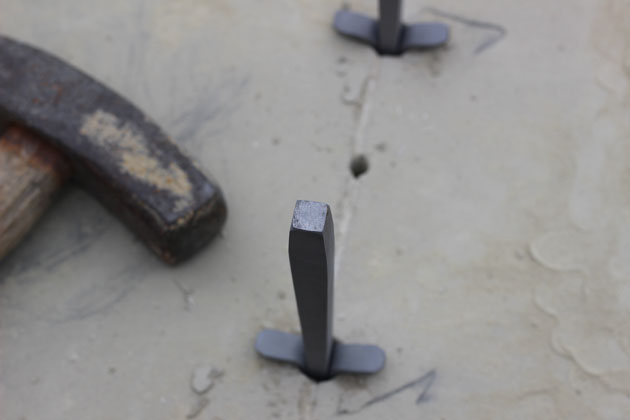
Initially I mark the stone out where I would like the break to be. Then at intervals along this line make drill holes, into which I place the plugs and feathers. They are tapped with a hammer in sequence, driving them equally, a little at a time into the stone. Patience is good. Hammer along the line, then rest a moment, let the stone take up the shock of the intrusion, listen for any noise from the stone. Repeat, repeat, repeat ….. Little by little the wedges are hammered further into the stone. The sound of the hammer on the wedge begins to change, it dulls as it sinks deeper into the stone, the stone makes a definite cracking sound, the smallest line appears where the block is breaking. Caution. Excitement.
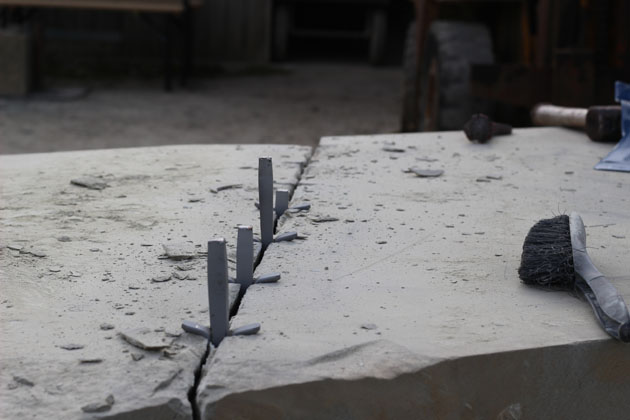
It is so tempting now to hit harder at the wedges. But gentle taps needed. More cracking sounds. More deep, hearty, breaking creaks – I don’t exactly know how to describe this sound, it goes into me, into the essential, primitive core and pleases and stuns in its originality. And there it is, the crack opens up and the insides of the block are revealed. It feels like something is evapourating out of the divide.

Looking into the inside of the block, the very heart of it.
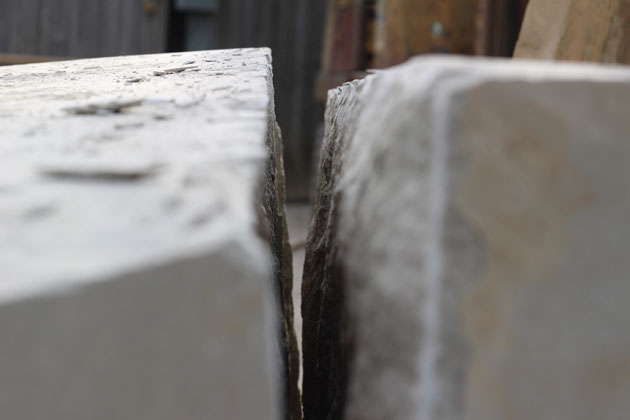
I’m relieved of course that my cleaving went according to plan – along the intended line, straight and clean. I can’t tell you how satisfying it is. The stone and I rest and regain composure.

4 Comments
Thanks Jennifer, v interesting and v brave of you!
What are you sculpting (carving seems too small a word)? Perhaps if you’d do some progress reports as you go along and keep us in suspense, that would mean some really interesting guesswork for your blogees.
Don’t worry, you’ll get lots of images as I go along!
very cool. I’ve seen this explained before but I’m surprised the quarry cannot cut the stone to the size you want/need. and how the hell did you get a 2 ton block to your workshop! or move it when you are done!
Hello Ellen – and yes, of course the quarry can cut to size for me, a service they charge nicely for, and can have a 12-14 week lead time before they can get a block on the saw. Also sometimes I come away from the quarry with a number of blocks for stock, and then may find they need sizing later on. Actually in this case I got the block pretty much the right size, the sculpture tapers significantly from the bottom to the top, and therefore a huge triangle of stone needed to be cut away. Oh, and for moving, I’ve got a forklift which helps enormously, and none of this would be possible without it!